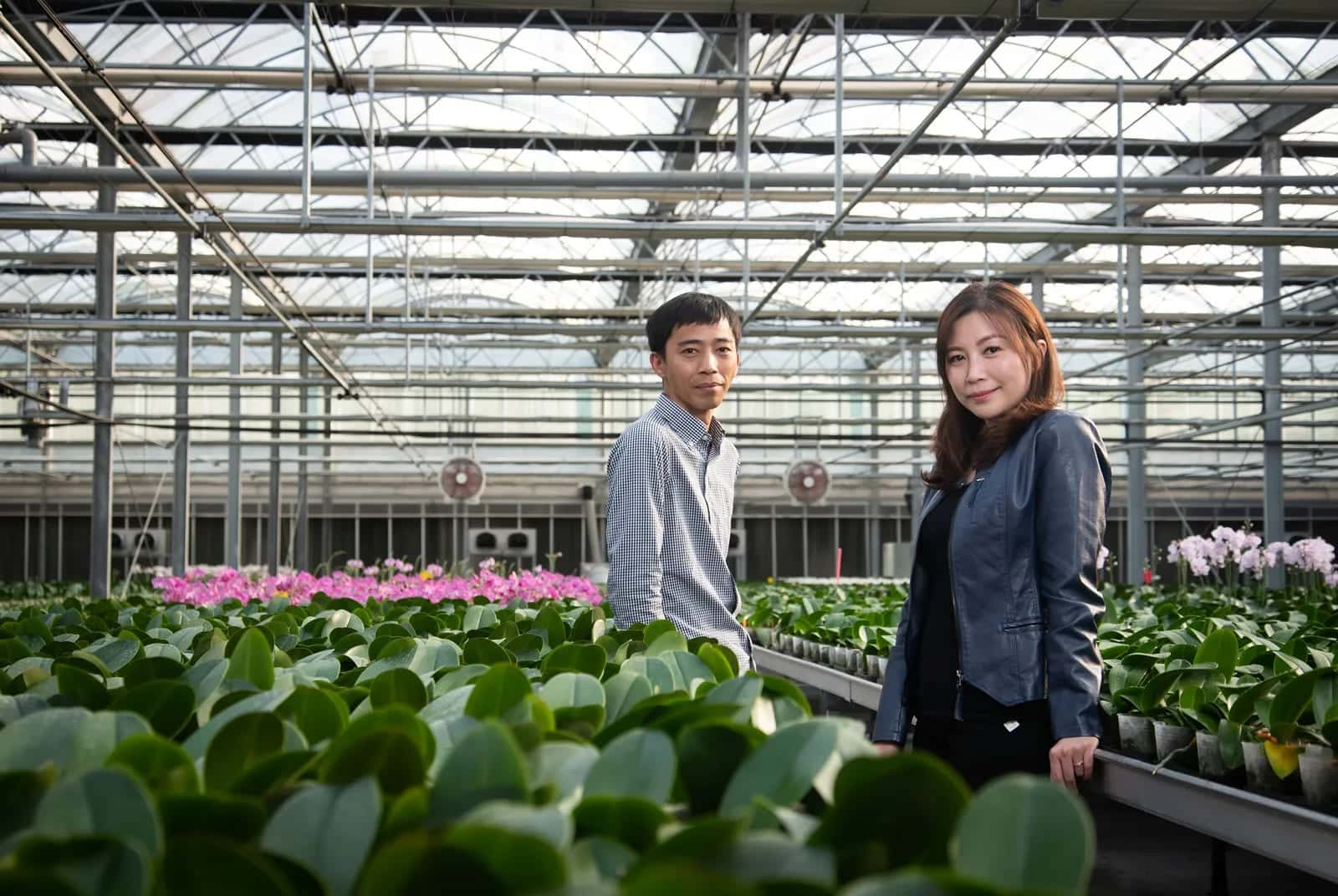How Taiwan’s greenhouse leader found customers in 30 countries

Source:Ming-Tang Huang
JJ Greenhouse, Taiwan’s greenhouse leader, builds 100,000 m2 of greenhouse space each year, selling to over 30 countries with customers as far away as Argentina and Africa. How have they gone about taking greenhouses to the world stage?
Views
How Taiwan’s greenhouse leader found customers in 30 countries
By Chen-kang Kangweb only
At JJ Greenhouse’s processing facility in Hsin Kang, Chiayi County, bundles of steel rods are piled over 15 feet high. Viewed from a distance they look like gigantic bundles of spaghetti.
“These aren’t your ordinary metal rods. They’re meant to be flexible like willow trees, so they ‘dance’ with the wind,” relates Hu Hsin-yuan, president of JJ Greenhouse. Greenhouse materials and structures must adapt to nature if they are to have durability.
 (Source: Ming-Tang Huang)
(Source: Ming-Tang Huang)
With over 30 years in the greenhouse industry, JJ Greenhouse was one of the first businesses in Taiwan to promote greenhouses. Today, with the capacity to build over 100,000 square meters of greenhouse space per year, JJ Greenhouse is widely recognized as Taiwan’s industry leader.
Yonglin Farm, an organic farm founded by Foxconn founder Terry Gou, spans over 70,000 square meters, including 226 greenhouses. All of these greenhouses are products of JJ Greenhouse.
Having begun expanding its sales territory from Taiwan to the United States nearly a decade ago, JJ Greenhouse has now reached over 30 countries around the world. And many of the company’s customers were placing new orders from overseas during the pandemic.
Nimbly exploiting Taiwan’s unexpected advantages: heat, typhoons, pestilence
Consisting largely of steel rods and plastic tarpaulins, greenhouse materials are easily obtained. The steel rods used for a 3,300 square-meter greenhouse total several dozen tons. Why do customers specify that they prefer to use Taiwanese goods?
Reason #1: Taiwan’s innate environment
“Temperate zone countries don’t deal with as many pests as Taiwan,” asserts Chyung Ay, former chancellor of National Chiayi University and current director of the Taiwan Agricultural Structures Association. Compared to countries like the Netherlands and Japan, which are renowned for their greenhouses, Taiwan faces such environmental challenges as frequent high temperatures, typhoons, and pests, all of which force Taiwan’s greenhouse industry professionals to directly confront the country’s harsh climate.
 (Source: Ming-Tang Huang)
(Source: Ming-Tang Huang)
For instance, gale-force gusts during a typhoon pose a great challenge to greenhouses. JJ Greenhouse uses wind flow simulator analysis to ensure that structures can withstand such winds. Taiwan’s humid environment favors the growth of moss, which affects light penetration. Accordingly, JJ Greenhouse imports specialized agricultural-grade film from Japan and employ improved methods that have even attracted the Japanese manufacturer to journey to Taiwan to observe.
Due to the uneven topography of Taiwan’s farmland, imported modular greenhouses rarely find homes in Taiwan. Rather, most greenhouses in Taiwan are custom-made, in line with the hallmark strength of Taiwanese businesses.
JJ Greenhouse also offers its modular greenhouses at more competitive prices than the Netherlands’ renowned greenhouses. In fact, there is nearly a five-fold difference in price between them, becoming a major advantage for JJ Greenhouse’s expansion into overseas markets.
Huang Chi-feng, a grower at Taiwan Orchid Plantation, explains that Dutch greenhouse manufacturers emphasize automation and advanced equipment, although at a price premium. But customers do not necessarily need such high-end equipment, and JJ Greenhouse can provide the most appropriate supplies to customers in accordance with their needs. Consequently, even customers as far off as Africa have placed orders with JJ, and have built greenhouses spanning nearly 100,000 square meters.
Relying on quality and comprehensive planning, JJ Greenhouse has built a strong reputation among domestic customers, retaining half of its clientele as return customers, with 30 percent of its client base coming via referrals from other existing customers.
1st-gen entrepreneur, mocked for ‘building houses to house vegetables’
Compared to the automated agriculture pioneer in the Netherlands, Taiwan originally trailed far behind in greenhouse development.
In 1990, Hu Hsin-yuan’s mother, JJ Greenhouse CEO Chen Shu-Lan, had just transitioned from the beauty industry to the greenhouse field. At first, farmers dismissed the notion of greenhouses, mocking her by saying that she was building houses to house vegetables.
However, the farmers eventually discovered that when typhoons hit with torrential rains, fields flooded, and produce prices skyrocketed, they were unable to recoup their costs, while greenhouse produce could still be picked normally. And as chain supermarkets began placing higher standards on greenhouse agricultural goods, greenhouses started proliferating all over Taiwan.
Before the year 2000, JJ Greenhouse was taking in around NT$30 million in revenues; by last year that figure had climbed to NT$250 million.
With the sibling tandem of Hu Hsin-yuan (older sister) and Hu Che-chia (younger brother) taking over the helm in 2018, JJ Greenhouse set about upgrading its operations. For instance, from using precision greenhouse equipment like conventional sensors and controllers, they elevated operations to “smart greenhouses” designed around the cloud and the Internet of Things.
“A lot of Taiwanese businesses build greenhouses overseas, where it normally takes three years to acclimate to the local climate, and then make step-by-step improvements. However, with our system, it takes just a year to collect the data, and in the second year everything should be up to speed.”
Although the pandemic delayed their plans to expand further southward, their next move has long been in the works.
“We’ve already purchased land in Vietnam and built a plant there. Right now we’re training Vietnamese guest workers in Taiwan, who will eventually return home as middle managers,” relates Hu Hsin-yuan. With the rise of the Vietnamese orchid market in recent years, the number of greenhouse orders has risen accordingly, justifying the company’s investment of over NT$10 million in plant facilities.
Have you read?
♦ Meet the 1000 ‘hidden champions’ behind Taiwan's car-making dream
♦ How did Kymco become a strategic ally of Harley-Davidson?
♦ Cutting-edge luxury bicycle frames from rural Taiwan
Translated by David Toman
Edited by TC Lin
Uploaded by Ian Huang






